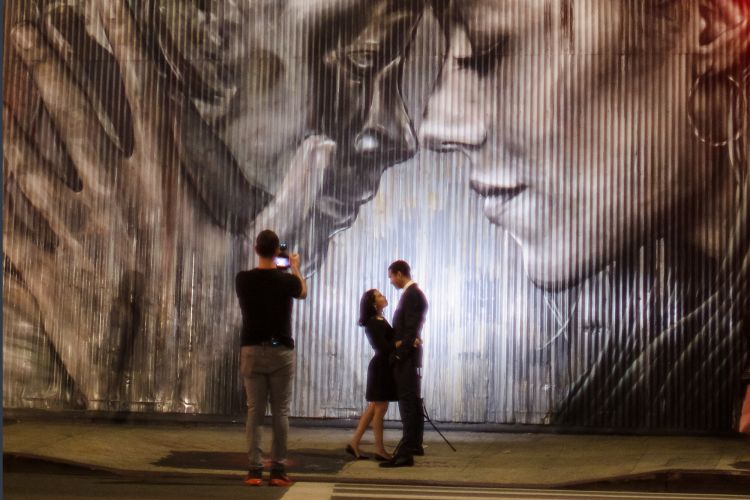
In our Master Lighting & Off-Camera Flash Facebook group, we constantly get asked whether or not it’s necessary to have the latest and greatest in lighting equipment or which flash is truly the best on the market. The answer to either of those questions isn’t that simple – everyone has a different budget, different creative needs and there is no one solution to the age-old question of “which light is best for me?” Instead, we decided it would be best to give you our favorite contenders for a wide range of power.
Photography Lighting Equipment
We wanted to help you make a more educated decision based on how much power you need, what brand of flash you already own, and what budget you are working with. We are all about offering options based on positive results and luckily we’ve gone through months and years of testing some of these lights to give you the best of the best photography lighting equipment for every budget.
- Best Speedlights for Photography
- Best Flash Transmitters for Photography
- Best Light Stands for Photography
- Best Medium Strobes for Photography
- Best Studio Lights & High-Powered Strobes for Photography
- Best Online Photography Lighting Courses
Best Speedlights for Photography

Most photographers start with one light, on-camera. Modern-day DSLRs and Mirrorless cameras come with a hot-shoe mount for this very reason and are also why our Lighting 101 course only discusses how to use your on-camera flash to create flattering and dynamic images. Once you’ve developed enough comfortability using an on-camera flash, then it’s time to move on to a more complex set-up and dive into off-camera flash photography. These are our top contenders for off-camera flash equipment in the 50-75Ws range:
- Canon Speedlite 600EX II-RT (Adorama | B&H | Amazon)
- Profoto A1X (Adorama | B&H | Amazon)
- Godox Zoom Li-on R2 VING V860IIC (Adorama | B&H | Amazon)
- Yongnuo YN600EX-RTII (Adorama | B&H | Amazon)
- Godox V1 (Adorama | B&H | Amazon)
Best Medium Strobes for Photography

With more light comes more responsibility – to create more interesting images with a complex setup, to create your own light when it doesn’t exist, and so much more. The possibilities of off-camera flash photography are truly endless once you master your understanding of light. While off-camera flashes provide simple solutions for location lighting, sometimes you just need a little bit more juice for your off-camera flash photography which is why we created Lighting 201, to dive deeper into the world of flash photography by taking the flash off-camera to create incredible imagery. Now that you’ve mastered the power of a single speedlight it’s time to start combining them with photography lighting equipment that packs a bit more power. Here are some options for medium strobes in the 150 – 350 Ws range:
- Flashpoint eVOLV 200 TTL (Equivalent to Godox AD200) (Adorama | B&H | Amazon)
- Profoto B10 (Adorama | B&H | Amazon)
- Interfit Honey Badger 320Ws Compact Flash Head (Adorama | B&H | Amazon)
- Godox AD100 Pro (Adorama | B&H | Amazon)
- Westcott Strobelite, 150 Ws Monolight (Adorama | B&H | Amazon)
Best Flash Transmitters for Photography
- Flashpoint R2 Pro 2.4GHz Transmitter (Adorama | B&H | Amazon)
- Profoto Air Remote (Adorama | B&H | Amazon)
Best Light Stands for Photography
Best Studio Lights & High-Powered Strobes for Photography

When searching for photography studio equipment it’s important to note that you’ll likely need more power than some of the photography lighting equipment we’ve listed above since you’ll be cutting out your ambient light and pumping in clean, off-camera light. Here are some of our favorite options that range in the 400-600 Ws:
- Flashpoint XPLOR 400 Pro (Equivalent to Godox AD400 Pro) (Adorama | B&H | Amazon)
- Flashpoint XPLOR 600 Pro (Equivalent to Godox AD600 Pro) (Adorama | B&H | Amazon)
- Profoto B10 Plus (Adorama | B&H | Amazon)
While these higher-powered strobes are categorized as “studio lighting” over the past couple of years they are becoming more and more popular for location lighting as well. In Lighting 3, we discuss why we need a bit more light in certain scenes on-location in order to cooperate with outdoor lighting conditions. Similarly, in Lighting 4 we discuss how we are often limited with sunlight and offer solutions on how to re-create natural light effects with off-camera lighting.
Best Online Photography Lighting Courses

If you want to brush up on your skills prior to taking the leap and purchasing any of the photography lighting equipment we’ve mentioned above, we highly suggest taking a look at our comprehensive lighting courses that are designed to help you master off-camera flash photography and start thinking creatively using flash:
- Lighting 101 – The Fundamentals of Flash Photography
- Lighting 201 – Single Source Off-Camera Light Shaping
- Lighting 3 – Advanced Off-Camera Flash (Location Lighting)
- Lighting 4 – Create Every Natural Light Effect Using Flash
- Flash Photography Training System (Includes Lighting 101, 201, 3, & 4)
- SLR Lounge Premium Membership: all of our lighting courses + 25 other photography educational courses
If you are looking for more information on light modification and what type of light modifiers create various styles of light, check out our Complete Guide to Lighting Modifiers!




Get Connected!